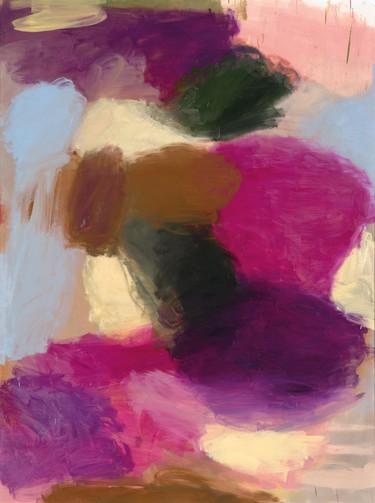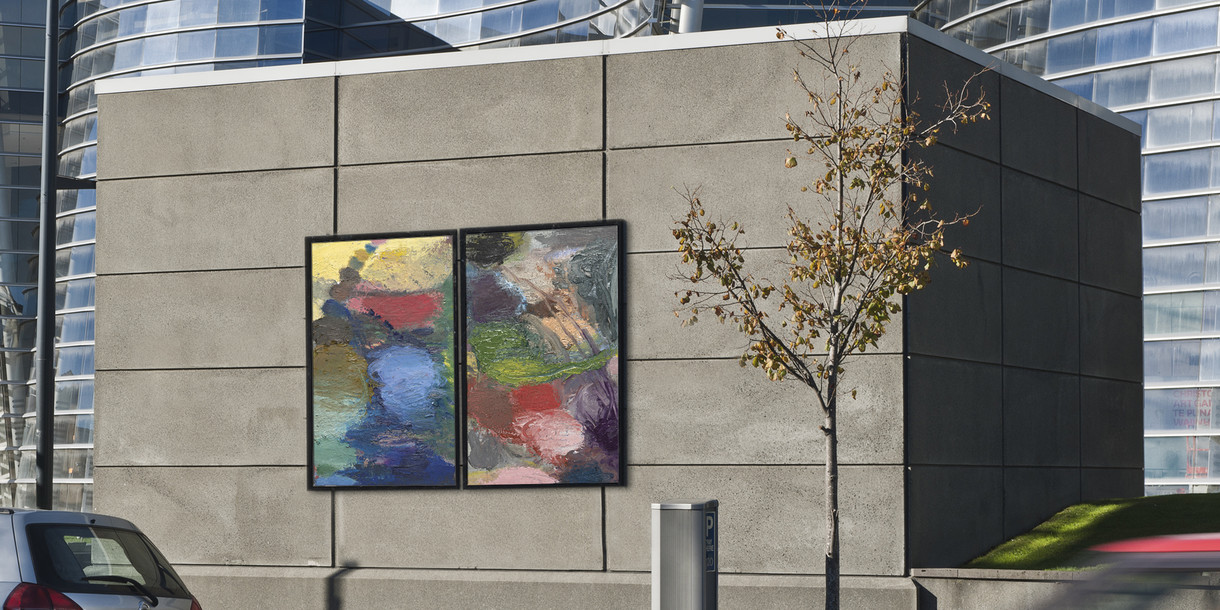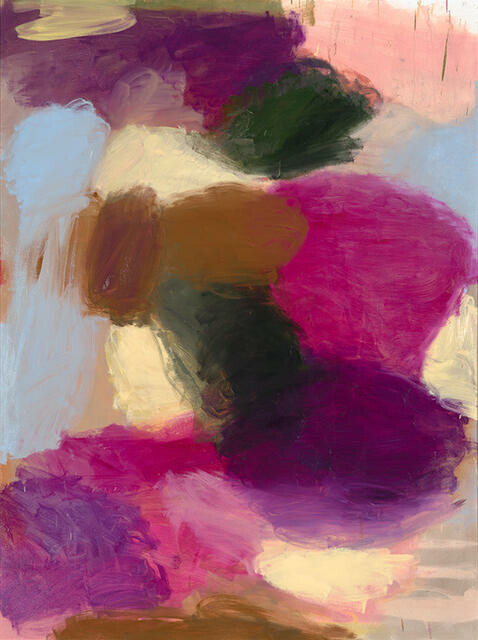
Robin Neate In a lonely place 2013. Oil on canvas. Collection of Christchurch Art Gallery Te Puna o Waiwhetū, purchased 2016
Robin Neate's In a Lonely Place
I still fondly recall my initial exposure as a teen to Ian Curtis’s final and uncannily premonitory composition with Joy Division, In a Lonely Place. But with its violaceously autumnal palette, Robin Neate’s work of the same name feels far removed from the dismal granite grey of a Manchester morning, or even the stark monochrome of the 1950 Nicholas Ray film that both of these pieces appropriate their title from.
Ray himself (whom Neate named his Ray Paintings series after) was “the outcast Hollywood rebel, white hair, black eye-patch, and a head full of subversion and controlled substances.”1 In writing about the isolation or outsiderness of Ray’s cinema, the filmmaker and critic Jacques Rivette proposed that “everything always proceeds from a simple situation where two or three people encounter some elementary and fundamental concepts of life. And the real struggle takes place in only one of them, against the interior demon of violence … which seems linked to man and his solitude.”2
Compared to film or music, the allure of the solitary nature of painting was possibly the primary motivator in my decision to move from Wellington to Christchurch to study at the University of Canterbury School of Fine Arts under Robin Neate. Neate himself has said that “In A Lonely Place could be an artist in their studio rather than the title of one of Ray’s films.”3 I also found his embrace of cinema very encouraging, as this was something I’d been looking at in my own practice. There is something of the (albeit taciturn) outsider in Neate’s personality and practice too; during writer John Hurrell’s visit to my studio last November he reminisced about having been in the same painting year as Neate at Canterbury and remembers him as being something of a rebel. In a recent email he elaborated: “Robin was distinctive in that he made monochromes, which was pretty outrageous for a first year student who was straight in from school. I never saw any other first years do that. Painting monochromes was very cheeky.”
In the flesh, these paintings are quite overwhelming due to their imposing scale. I recall visiting Hamish McKay Gallery as this work was being packaged and shipped to Christchurch and I can still visualise the difficulty with which it was hauled down the stairs. On a special recent trip into the innards of Christchurch Art Gallery’s storerooms I was able to enjoy an extended peek at In A Lonely Place and was struck by the textures and remnants from previous layers where Neate had overpainted early attempts. Neate explains: “each layer (informs) the next until I get them to a point where they feel right.”4
As I bus in from Antrim farm (my partner’s parents’ estate in Valetta) on the Ash Vegas to Christchurch intercity link, I’m reminded of but one reason why Robin Neate’s Ray Paintings, and In A Lonely Place in particular, resonate so thoroughly with me: their sumptuous chromatic field evokes and reinterprets the distribution of these gloriously pinkish twilit horizons that we’re lucky enough to observe here in Canterbury on a brisk, autumn night.










